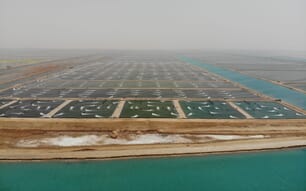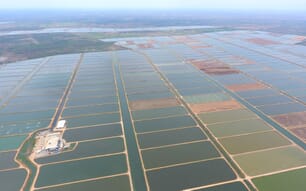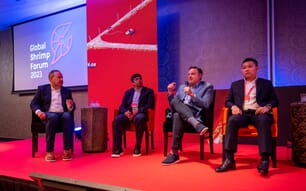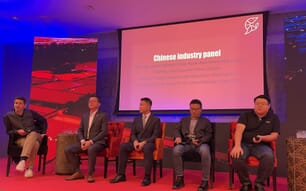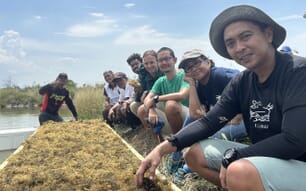The feed session, which takes place from 11.15am until 5pm on 6 September, is set to feature some of the leading lights in shrimp feed – and feed ingredient – production and will be chaired by Esther Luiten, commercial director of the Aquaculture Stewardship Council (ASC), and co-chaired by Ronnie Tan, who sits on the advisory board of Calysta and is regional aquaculture consultant with the US Grains Council.

Tan outlines their plans to ensure the panelists discuss the key issues relating to feed – some of which are more positive than others.
“For industry the number one problem is that feed prices are very high – since early 2021 shrimp feed prices have risen 25 percent. Last week, after the collapse of the Black Sea Grain Deal, wheat prices have risen another 8 percent, and I don’t see feed prices coming down in the near future,” he explains.
Wheat forms an essential part of pelleted, rather than extruded feeds, and such emerging commodity trends are set to form the basis of the session’s opening address, by Rabobank’s Carlos Mera. This is likely to deliver key insights into the bulk ingredients that are crucial for shrimp feed formulation.
“The world currently produces about 5.5 million tonnes of shrimp. If you can an average FCR of 1.6 that’s nearly 9 million tonnes of feed and you need a lot of feed ingredients for this,” notes Tan.
This will be followed by talks from Ramakanth Akula, CEO of The Waterbase and Carlos Miranda, of Skretting, about the regional differences in feed manufacturing and the challenges they face in India and Ecuador respectively. As Tan notes, while many of the key players in the sector have been able to absorb the increase in feed prices over the last few years, that may no longer be the case.
“Farm gate prices have eased considerably, so farmers are facing negative margins. Feed millers need to consider whether their customers will survive – if their customers don’t, neither will the millers,” he observes.
How can stepping up sustainability be financed?
As Tan explains, while most millers are looking to source more sustainable ingredients, these tend to come at a cost. To make sustainability initiatives more realistic, it will be essential to spread any increase in prices along the entire supply chain, he suggests.
“Feed margins are already very, very low. If you look at the difference between the farmgate price for shrimp and the retail price for the shrimp in Europe, there’s a 100 percent increase. The question is ‘who’s making the money’?” he adds.
This is likely to be a key component of the second part of the feed session, which will include input from ASC’s Michiel Franzen, discussing the rationale of the organisation’s feed standard and the implications it will have for feed manufacturers supplying ASC-certified producers.
Despite the challenges that might prevent some companies from pursuing their sustainability targets, the emergence of El Niño is going to reduce the availability of fishmeal and fish oil from the eastern Pacific. This, in turn, is likely to lead to a substantial increase in marine ingredient prices and could help to catalyse the uptake of novel – often more sustainable – alternatives.
“Novel feed ingredients aren’t cheap, they have to start with a high price initially, because of the cost and lack of economies of scale, but this could be the game-changing scenario that the novel ingredients sector has been waiting for. While inclusion of novel feed ingredients is still very low, I think that 2024 could be a turning point,” Tan predicts.
This is likely to be a key part of the feed session’s third section, which will look at what ingredients can be used to help reduce the content of marine ingredients from their current average of around 12 percent. This session will include inputs from Calysta’s Allan LeBlanc, and Jesper Clausen, who – intriguingly – will be talking about a marine ingredient-free shrimp feed that the Dutch firm has developed in Vietnam.
This section will also look into smart feeding technologies that can help make feeding more efficient – all the more important when feed prices are so high – which will be led by Andrew Campbell of AQ1.
Are credit terms in jeopardy?
One other key factor that is likely to be featured in to the discussions, notes Tan, is the rise in interest rates around the world and whether these endanger the current practice of millers giving their most trusted farmers credit terms – usually in the region of 30 to 45 days – in which to pay them for the feed.
“When there’s cheap money, it’s easy for feed companies to give credit to finance buyers, but now it’s a risk to extend high credit terms to the farmers. The feed companies need to assess which farmers are good enough to continue to extend credit to, or whether they need to shorten the credit terms. If they have one bad debt they lose money,” he observes.
Meanwhile farmers feeling the pinch will be considering buying feeds with a lower protein content, as these come at a lower price.
“With such poor farmgate prices everyone is just struggling to stay above water,” Tan concludes.
The full agenda of the feed session at this year's Global Shrimp Forum can be accessed here.

